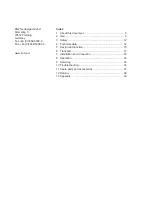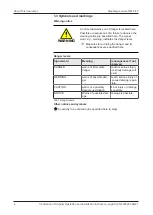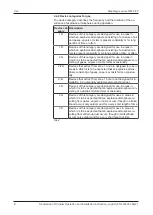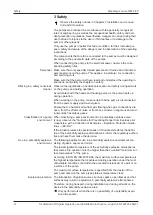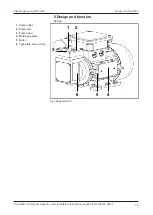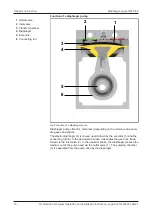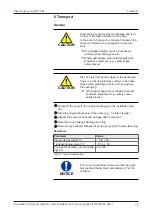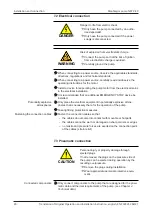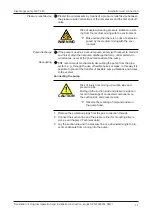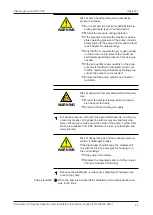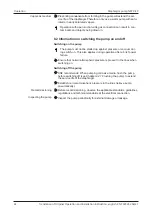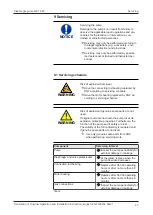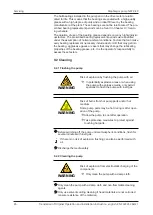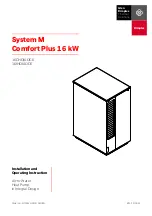
Safety
Diaphragm pump N87.9 EX
12
Translation of Original Operation and Installation Instruction, english, KNF 323252 04/21
3 Safety
Observe the safety notices in Chapters
and
.
The pumps are produced in accordance with the generally recognized
rules of engineering, as well as the occupational health, safety and acci-
dent prevention regulations. Nevertheless, dangers can arise during their
use that lead to injuries to the user or third parties or to damage to the
pump or other property.
Only use the pumps in perfect technical condition, for their intended pur-
pose, safely and aware of the dangers and in observation of the operating
instructions.
The components that are to be connected to the pumps must be designed
according to the pneumatic data of the pumps.
When connecting the pumps to the electrical power, observe the corre-
sponding safety rules.
Personnel Make sure that only specially trained personnel or trained and instructed
personnel work on the pumps. This applies, in particular, for connection
and servicing work.
Make sure that the personnel have read and understood the operating in-
structions, particularly the chapter on safety.
Working in a safety conscious
manner
Observe the regulations on accident prevention and safety during all work
on the pumps and during operation.
Avoid contact with the heads and housing parts, as the pump heats up
during operation.
When working on the pump, make certain that the pump is disconnected
from the power supply and de-energized.
Ensure that no hazards arise from gas flowing when gas connections are
open, from the effects of noise or from hot, corrosive, dangerous and envi-
ronmentally hazardous gases.
Classification of a pump
environment
When classifying a pump environment in a potentially explosive area
(zone), observe the "Guideline for Preventing Danger from Explosive At-
mospheres, with a Collection of Examples – Explosion Protection Guide-
lines – (EX-RL)".
If the situation relates to special cases or if doubt exists about the defini-
tion of the potentially explosive atmospheres, inform the regulatory authori-
ties and have them make the decision.
Use in a potentially explosive
environment
The following applies for use in a potentially explosive environment con-
sisting of gases, vapors and mists:
The lowest ignition temperature of the potentially explosive atmospheres
that comes into question must be higher than the so-called "maximum sur-
face temperature" of the pump.
According to DIN EN ISO 80079-36, the maximum surface temperature is
the highest temperature that is achieved during operation under the most
unfavorable conditions (but within the accepted tolerances) of a part or on
a surface of the pump.
The maximum surface temperature is specified from the design of the
pump and noted on the pump type plate as temperature class.
Explosion protection The introduction of ignition sources such as sparks, open flames and hot
surfaces may result in explosions in potentially explosive atmospheres.
Therefore, during transport, during installation and during all work on the
device in the potentially explosive area:
§
Only perform work when there is no possibility of a potentially explo-
sive atmosphere.


